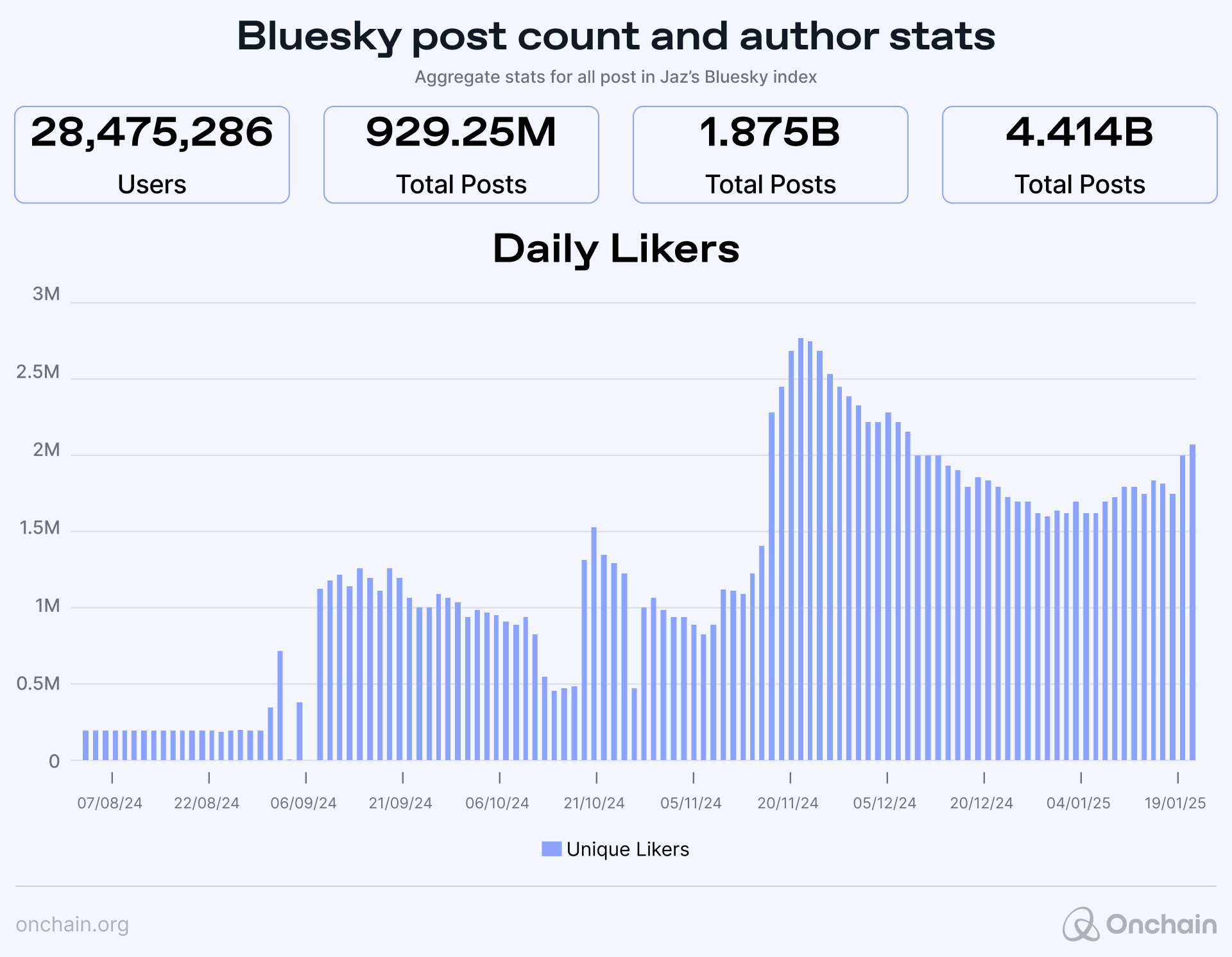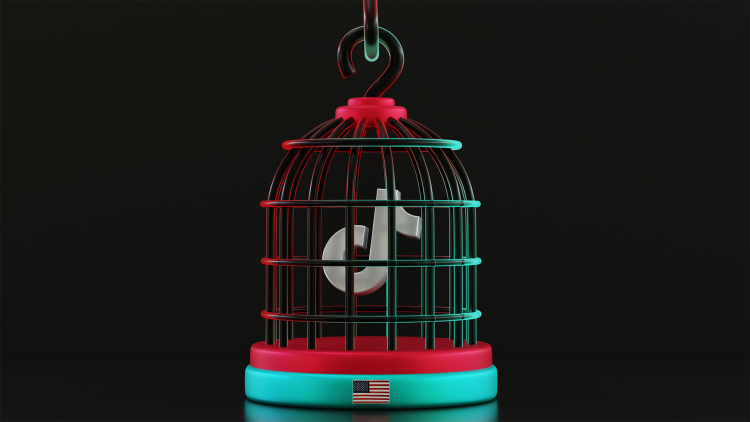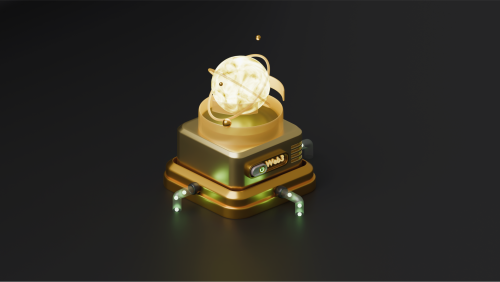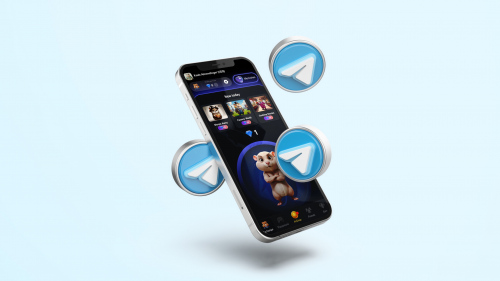At 10:35PM EST on January 19th, TikTok began to glitch. A message appeared:
We regret that a US law banning TikTok will take effect on January 19th and force us to make our services temporarily unavailable.
We’re working to restore our service in the US as soon as possible, and we appreciate your support. Please stay tuned.
By midnight, users across the United States (and many others around the world) were no longer able to access the popular video chat platform.
In the days leading up to the ban, the user community collectively wondered what to do. Which platform would be an adequate replacement? At first, Instagram seemed a plausible option. Its Reels, though moderated by a very different algorithm favoring promotions over connection, felt familiar to TikTok users.
But there was a complication: Meta was at the forefront of the lobby that banned TikTok, having spent the largest amount of lobby funds in U.S. history. This quickly turned TikTok users against a return to Meta apps.
The tide turns
While 2024 was a big year for DeSoc (decentralized social media) users like us, most Web2 users were woefully unaquainted with the concept of federated accounts and decentralized platforms. That is, until the TikTok ban date drew near.
Three days before the temporary shuttering of TikTok, trust in traditional social media (TradSoc) fell to an all-time low. Meta was out. YouTube, being owned by Google, didn’t feel much better. What, then were the options?
Bluesky’s foothold

DeSoc app Bluesky, funded by former Twitter CEO Jack Dorsey and led by Jay Grabber, gained significant traction in Q4 of 2024 as blocking and content moderation dissolved on Twitter after the Musk buyout. This was a major hit against traditional social media for the Web2 community. By the end of 2024, BlueSky boasted over 20M users.
Bluesky is federated, meaning users own their data and can migrate easily to another platform within the network at any time. What was interesting about the platform’s growth in November 2024 was that many of its new users were not Web3 native.
This laid the groundwork of trust for decentralized social media platforms as the ban brewed. Bluesky’s 20M users saw how comfortable DeSoc can be. When the threat of the TikTok ban loomed and distrust of traditional social media rose, Bluesky became a trusted option.
Introducing Skylight
Unfortunately, Bluesky is optimized to act like Twitter. It’s a comfortable short-form text platform, but videos don’t work very well (though this is changing). Two days before the ban, a new app appeared in the feeds of social media platforms: SkyLight.
It’s designed to federate with Bluesky — your posts on Bluesky will appear on Skylight once it is available. The key difference: Skylight is optimized for vertical video sharing.
Hailed as the “AT Proto TikTok,” Skylight is now in beta testing while awaiting approval from the app stores. You can sign up to be a beta tester on their Bluesky profile, symbolic of the federated system they share.
What about Neptune?
For months, TikTokers were promised a democratized replacement for video sharing. The Neptune team posted regularly to TikTok, advocating for federated social media and inviting TikTokers to the Neptune waitlist.
Neptune is a female-led app designed to function just like TikTok. Though it had been in development for several months (their Twitter account launched in August 2024), the app was not ready by the day TikTok shut down. Instead, would-be users could only sign up for beta testing.
The founders are currently raising VC funds to take development to the finish line, giving the TikTok community pause amid concerns about future controlling parties.
In the days leading up to the shuttering, I watched TikTok closely, my anthropologist antennae tingling. A shift in social media culture was happening and I was intrigued to see DeSoc emerge as a preferred option. Bluesky, Skylight, and Neptune were the favorites of the TikTok community as the countdown continued, their posts proliferating TikTok and mentioned regularly as preferred options by other creators. Clearly, there was a problem.
Too many waitlists
The day of TikTok’s shut down wasn’t a surprise to anyone. The aid bill that couched the ban was signed in April 2024. Platforms had until that date to prepare for a ban that would affect the community and businesses of 170M U.S. users. A huge user base that would be looking for a new place to congregate. Why, then, weren’t DeSoc options ready? DeSoc failed its first test to go mainstream.
We published our Onchain DeSoc report in October to help position DeSoc as one of the most exciting business opportunities for 2025. Yet, DeSoc struggled when the opportunity came.
Pixelfed, a decentralized Instagram replacement, continues to crash. 3Five, yet another potential TikTok-esque option, began building alongside the ban, too late to compete against Neptune or Skylight.
Counting from January 19th, TikTok has a 90-day stay. This gives DeSoc business founders a 90-day window for rapid development to capture a user base in the millions when time runs out.
If you’ve been thinking about building a business in DeSoc, this is your chance to do it. But know this — the flood of users will be Web2 native. It is imperative that you build something that feels familiar to them, or they’ll leave.
The 2025 outlook
As users scramble for a new platform, one thing remains in the back of their minds: the law banning TikTok is not written just for TikTok. It can be used to ban any social media platform above 1M users that is 20% or more owned by foreign adversaries. The TikTok community wonders: what happens if we migrate to another platform and that gets banned, too?
This is where DeSoc truly shines. Decentralized at its core means users own their own content and profiles.
The beauty is twofold — the platform can’t manipulate and ban its users in the same way centralized social media can; and if one platform gets banned, everyone can migrate lock, stock, and barrel to the next.
No more starting over. This is the point to focus on in brand messaging if you want to reassure DeSoc users.
The ban has caused enormous concern, not only for its community, but also for the leaders of traditional social media platforms. The TikTok community no longer trusts TradSoc. In orchestrating the ban, the United States government has given users every reason to go decentralized — and they are. Our DeSoc report will help you navigate what to do next.



